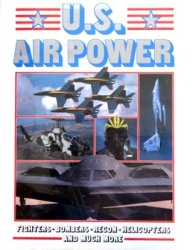Casualties; clOO Villista casualties). On March 15, Maj Gen Pershing was appointed to head a US Army punitive expedition (c6,000 cavalry, with artillery support and reconnaissance aircraft) against Villa. Penetrating some 400 miles (640km) into Mexico, Pershing’s columns dispersed Villa’s guerrilla army but failed to capture him. Increasing Mexican resentment of the incursion and clashes with Carranza’s regular army - notably at Carrizal, June 21 (US: 12 dead, 33 prisoners; 33 Mexican casualties) — contributed to US withdrawal on February 5 1917. RO’N.
Meyer, Gen John C (1919-75). US. Fighter pilot credited with 24 aerial combat victories while flying with the 352nd Fighter Group in the European Theatre of Operations, 1943-45. He also destroyed two MiG-15s in Korea. Later reached rank of General and served as usaaf’s Vice cos.
MI5, MI6, MI9. British security, intelligence and escape services. See also military intkllickni'k
ORGANIZATIONS.
MICV (Mechanized Infantry Combat Vehicle). An armoured vehicle from which infantry can fight rather than a mere armoured personnel carrier (arc) or “battle taxi” that transports infantry to dismount and fight on foot. The Germans pioneered the concept with armoured half tracks in World War II, and postwar the Soviet Union has developed it furthest with the bmp series. This has led to Western micvs, notably the West German Marder and the American M2 Bradley, which are equipped with both vehicle-mounted weapons (20-25mm guns and anti-tank missiles) and fire ports for the infantry to use their own small arms on the move. The British decided to produce an armed apc rather than a true micv in their new Warrior vehicle. This is intended to give fire support to dismounted troops. EJG.
Middle East campaign (1916-18). By 1916 the primary British objectives of safeguarding the Suez Canal and the Arabian Gulf against Turkey had been achieved. In Egypt Gen Murray drove the Turks back across the Sinai, repulsing a counterattack at Romani on August 3. In Mesopotamia though, the Turks’ siege of Kut-al-Amara remained unbroken and, on April 29, Gen Townshend was obliged to surrender. It was not until the end of the year that a fresh offensive was launched under Gen Maude. On December 13 Anglo-Indian forces began their advance up the River Tigris. Kut was recaptured on February 23 1917 and Baghdad fell on March 11. The summer brought a temporary halt to Maude’s offensive but soon after its resumption in September he threatened to seize control of the Mosul oilfields. However, with the general’s death on November 18 the campaign’s impetus was lost.
In Palestine, Murray suffered two reverses against Gaza, on March 26 and April 17-19. He was replaced by Allenby, who brought about a British revival. On October 31 British forces won the Third Battle of Gaza and pressing north, took Jerusalem on December 9.
In autumn 1918, the British made their final push for victory in Palestine and Mesopotamia. On September 18 Allenby smashed two Turkish armies at Megiddo and advanced rapidly to Aleppo and the borders of Turkish Anatolia. Meanwhile, on October 23 British forces in Mesopotamia moved to seize control of the Mosul oilfields before the impending Turkish collapse. Lt Gen Cobbe failed to secure these objectives before the signing of the Armistice with Turkey on October 30 but pressed on to occupy Mosul on November 14. MS.
Midway, Battle of (June 3-6,
1942). In June 1942, the major elements of the Japanese navy, including four fleet carriers, advanced against the Midway Island group, which served as an outpost for the defence of Hawaii, with the objective of drawing out and destroying the main American carrier forces. The Japanese armada was divided into three parts, and substantial other naval forces, in addition, were dispatched north to the Aleutians to act as a diversion. Overall command of the operation was exercised by Adm Yamamoto, while the carrier strike force was led by Vice Adm Nagumo. Adm Nimitz, commander US Pacific Fleet, deployed his forces on the basis of detailed knowledge of the Japanese plans provided by “Magic” and other intelligence. The Midway garrison was reinforced, and three fleet carriers under Rear Adm Spruance were sent to intercept the Japanese fleet. Only a small force was detached to the Aleutians.
The Japanese transport force was discovered and attacked ineffectually by aircraft from Midway on June 3. On June 4, Japanese aircraft heavily bombed shore installations and suffered only light losses, while half of Midway’s strike aircraft were shot down in unsuccessful attempts to inflict damage on the Japanese carriers; American carrier-based torpedo-bombers were practically annihilated in attacks against the Japanese carriers, which failed completely, but American dive-bombers struck three Japanese carriers (Akagi, Kaga, and Soryu)




 World History
World History









